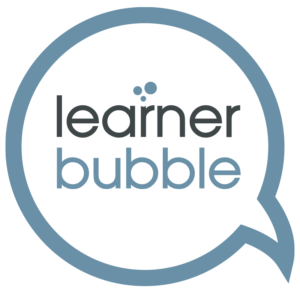Create An eLearning Course: A Step-By-Step Guide

Developing Learning Initiatives That Work!
Creating an eLearning course is a comprehensive process that involves careful planning, collaboration with stakeholders, content creation, and effective presentation techniques to engage your audience. In today’s digital age, eLearning has become a vital tool for education and professional development, offering flexible, accessible, and diverse learning opportunities. This guide will walk you through the step-by-step process of creating an eLearning course.
Step 1: Identify Your Audience And Learning Objectives
Before diving into the creation process, it’s crucial to understand who your audience is and what you want them to achieve through your course. Conduct audience research to identify their needs, preferences, and challenges. This will help you tailor your content and make it relevant and engaging. Based on your findings, define clear, measurable learning objectives that align with your audience’s goals.
Step 2: Involve Stakeholders In The Planning Process
Stakeholders, including Subject Matter Experts (SMEs), managers, technology specialists, and potential learners, play a critical role in the success of your eLearning course. Involve them early in the planning process to gather insights, validate content, and ensure that the course meets the learning objectives. Collaborating with stakeholders can also help in identifying the best instructional strategies and technologies to use.
Step 3: Choose The Right Authoring Tools And Technologies
Selecting the appropriate authoring tools and technologies is essential for creating an engaging and interactive eLearning course. Consider tools that offer flexibility in integrating various multimedia elements, such as videos, images, animations, and quizzes. Also, ensure that your course is accessible on multiple devices and platforms to accommodate your audience’s preferences.
Step 4: Design Your Course Structure
Organize your content into a coherent structure that facilitates learning. Start with an outline that includes an introduction, main content divided into modules or chapters, and a conclusion. Each section should build on the previous one, leading learners through the material in a logical and engaging manner. Incorporating interactive elements, such as quizzes and simulations, can enhance learner engagement and retention.
Step 5: Write High-Quality Content
Writing high-quality, engaging content is critical for the success of your eLearning course. Use clear, concise language and include practical examples to illustrate key concepts. Break down complex topics into manageable chunks to make the content more digestible. Often, you can ask stakeholders to provide you with relevant content, which can be adapted for your online learning course.
Step 6: Enhance Engagement With Interactive And Multimedia Elements
To maximize engagement, include interactive and multimedia elements in your course. Videos, infographics, animations, and interactive simulations can make learning more engaging and effective. These elements not only break the monotony of text-based content but also cater to different learning needs, making your course more dynamic, interesting, and inclusive. This will not only enrich the learning experience but also facilitate better retention of information.
Step 7: Test And Revise Your eLearning Course
Before launching your course, conduct thorough testing with a small group of users. Gather feedback on the course’s usability, content relevance, and engagement level. Use this feedback to make necessary revisions and improvements. This iterative process ensures that your course meets the highest standards of quality and effectiveness.
Step 8: Launch And Promote Your eLearning Course
Once your course is polished and ready, it’s time to launch and promote it to your target audience. Use various digital marketing strategies, such as email marketing, social media, and content marketing, to reach potential learners. If you are providing content in-house, be sure to consider how you are going to promote the course internally. It can be useful to gain support from influential senior team members who can highlight the importance and benefit of your content to their teams. If you have internal publications, it is also useful to promote your eLearning course there.
Step 9: Gather Feedback And Continuously Improve
After launching your course, continue to gather feedback from learners to identify areas for improvement. Regular updates and enhancements based on learner feedback and emerging trends in eLearning will keep your course relevant and engaging over time.
Creating an engaging eLearning course requires careful planning, collaboration, and a commitment to quality and continuous improvement. By following these steps, you can create a compelling eLearning course that not only educates but also captivates your audience. The success of an eLearning course lies in its ability to engage learners in a meaningful way, making the learning process both enjoyable and effective.

Learner Bubble
A smart learning management system with a wealth of built-in features to engage your learners and remove any admin worries. With an easy to use interface and a suite of in-built learning products, it’s the simple solution, that gets results.
Originally published at www.learnerbubble.com.
Source link



